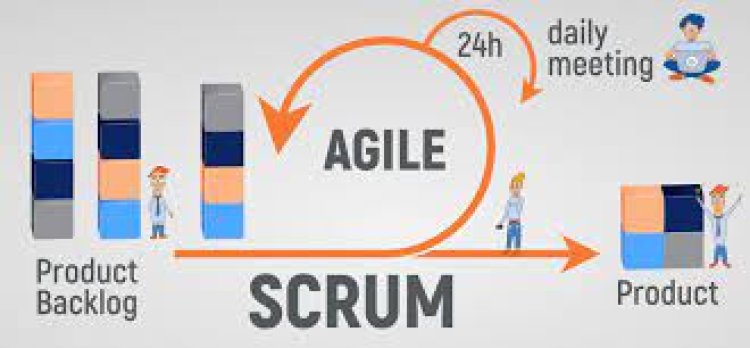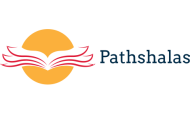Agile and Scrum
The Scrum framework is a tool that helps agile teams collaborate more effectively. The members of the team are capable of delivering and maintaining the difficult product.

Agile vs. Scrum: How to Choose the Best Method
Scrum is a subset of the Agile technique known as Agile, which in turn is a sort of project management strategy known as Agile. This tutorial will enlighten you on the primary distinctions between the two.
It is possible that you will encounter people using the terms "Scrum" and "Agile" interchangeably, which can be confusing. Let's take a more in-depth look at what sets Scrum and Agile apart from other project management methodologies, as well as how and when you should use them.
The agile methodology for managing projects places an emphasis on the successful completion of tasks in manageable increments. It is frequently utilised for projects where it is anticipated that there may be some degree of volatility or uncertainty.
Scrum, on the other hand, is one of the Agile approaches that are available. Think of it more as the real structure that teams can utilise in order to put Agile ideas into practise. Scrum is a well-known Agile technique, and the number of projects that adopt it keeps growing.[1]
Agile vs. Scrum
The main difference between Scrum and Agile is that Agile is a style of project management, and Scrum is one of several different methods used to implement that style.
Read Also:https://pathshalas.com/what-is-project-management
What is Agile?
An technique or attitude to project management known as agile tries to accomplish a goal by completing it in a series of incremental steps. Therefore, an Agile project is comprised of smaller chunks of activities that may be delivered in shorter time frames regularly. This is as opposed to having one huge reveal or launch at the beginning of the process. Because of this, it is much simpler for project teams to adjust to shifting priorities, find solutions to problems as they arise, and reduce costs, time, and inefficiencies.
You will need to make use of a framework or a specific approach in order to put Agile concepts into action in a company or on a project. This is required in order to implement Agile principles. Scrum is by far the most widely used of these. Other methodologies include Extreme Programming, Kanban, and the Crystal Method, in addition to various hybrid approaches.
The Agile methodology of project management is driven by four core values, which are as follows:
- Individuals and social interactions take precedence over procedures and apparatus.
- Software that actually works favoured over exhaustive documentation
- Collaboration with the customer prior to contract negotiation
- valuing the ability to adapt over the ability to strictly adhere to a plan
- In most cases, the phrases that are bolded are given more weight than the ones that are not.
Agile first appeared in the software development industry but has now spread to a wide variety of other fields, including technology, marketing, design, and finance, among others. Even many industries, such as construction, which have traditionally relied on traditional project management approaches, have begun to adopt Agile practises into their day-to-day operations.
When you should use Agile
Agile is ideally suited for projects that are already underway as well as projects in which key details are unclear at the outset. Because of this, Agile is well-suited for fields that must deal with consistent or unanticipated change, as well as for teams developing new products. Event planning is the kind of project that benefits from more conventional project management approaches like Waterfall because of the stringent limits it imposes, such as a certain amount of time and a predetermined budget.
How to build Agile expertise
Are you getting ready to take on a new role, or are you working on introducing the Agile technique at your company? In that case, take a look at the list of resources that follows.
- Management of agile projects using Google Docs. You will learn how to construct, manage, and modify a product backlog as well as implement Agile's value-driven delivery methodologies by taking this online course from Google that allows you to learn at your own pace. You will finish the course with a certificate that you may put on your CV and share with others.
- A Specialisation in Agile Leadership has been offered by the University of Colorado. This online course is perfect for individuals who are interested in playing more advanced roles. The areas of social psychology, change management, and the neuroscience of change are the primary focuses of this book.
What is Scrum?
Scrum is a type of Agile technique that was developed specifically for the purpose of developing products in environments that are prone to change.
In Scrum, delivery cycles are referred to as "sprints," and they typically span anywhere from one to four weeks. The work is done in stages and builds on the work that was done in the past. Scrum teams are often comprised of a limited number of employees (normally between three and nine), in addition to a Scrum master and a product owner. It is important to maintain open lines of communication with team members and other stakeholders in order to ensure that feedback is continuously collected and that adjustments can be made as needed.
The Agile technique that sees the most widespread adoption is called Scrum. According to the report entitled "State of Agile," which was published in 2021 [1,] around 66 percent of Agile users make use of Scrum, while 15 percent make use of variations of Scrum, such as Scrumban and Scrum/XP.
Scrum is supported by these three pillars:
- Transparency means that all of the participants have full access to the information, including the progress and the goals.
- The project and the activities can be adapted so that they better reflect the new priorities.
- Inspection: The group works hard to achieve continuous improvement in both the product and the process.
And five principles:
-
Courage
-
Focus
-
Commitment
-
Respect
-
Openness
When you should use Scrum
Scrum is a good tool for managing complex projects in situations that are constantly changing. Scrum, like many other Agile techniques, is beneficial for industries that are in a state of constant change as well as for projects that are on the cutting edge. An method that is more traditional may be preferable if you are working with predetermined requirements or if you are working in an organisation that does not permit seamless communication across functional areas.
Agile vs. Scrum
Scrum is a way for managing projects that falls under the larger Agile umbrella. Agile is a strategy to managing projects, and Scrum is a method that may be used to implement the Agile approach. There are a few aspects of Scrum that are analogous to Agile concepts, and there are several aspects that distinguish Scrum from other methodologies that fall under the Agile umbrella.
The following is a list of the primary commonalities between Scrum and Agile, which distinguish Scrum as a form of the Agile process:
- Short-term cycles of product development
- Put your attention on the people, the teamwork, and the communication.
- Capacity to respond appropriately to comments and alterations.
The following is what differentiates Scrum from the many other Agile methodologies:
- Work is broken up into periods called sprints, and each sprint can last anywhere from one to four weeks.
- A product backlog is a list that is maintained that details the work that has to be completed.
- Scrum master, product owner, and development team are the three roles that make up the overall structure.
- A quick "daily Scrum" update meeting is held for the members of the team.
How to build Scrum expertise
Consider getting certified as a Scrum Master if you want to broaden the range of talents you have in Scrum and improve the quality of your CV. As an illustration, you have the opportunity to enrol in the online, self-paced course titled "Scrum Master Essentials," which is a component of the IBM IT Project Manager Professional Certificate:
Scrum vs. Kanban
The phrase "signboard" in Japanese is where the term "kanban" originated from. This technique utilises a board, either virtually or physically, that is sectioned up into columns that stand for the various stages of a project. Sticky notes or cards that represent the project will be moved into the subsequent phase as the project moves forward. This process will continue until the project is finished. It is an excellent tool for visualising the process and finding bottlenecks in the flow.
Kanban, in contrast to Scrum, lays less of an emphasis on defined schedules, and instead organises work such that it flows continuously. At the beginning, decisions are not made about roles such as product owners. Scrumban is the name given to the hybrid approach that many project managers create by combining the concepts of Scrum and Kanban.
Scrum vs. XP
Extreme Programming, sometimes known as XP, is a kind of the Agile development process that is typically used only to the creation of software. It emphasises incremental improvements and repeated testing, much like other Agile methodologies. Pair programming is a key component of Extreme Programming (XP), which refers to the collaborative effort of two programmers to write code.
Learn Agile and Scrum with Coursera
Agile and Scrum are anticipated to become standard practises at an increasing number of businesses as the capacity to manage projects remains in high demand. If you want to take your professional life to the next level, you should think about getting training from a reputable company like IBM, which is a market leader in its field. You will become an expert in topics such as adaptive planning, iterative development, and continuous improvement after completing the following course.













